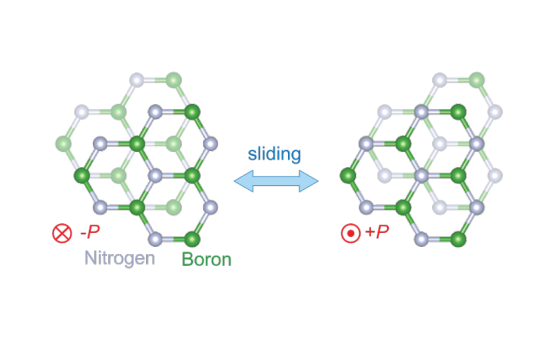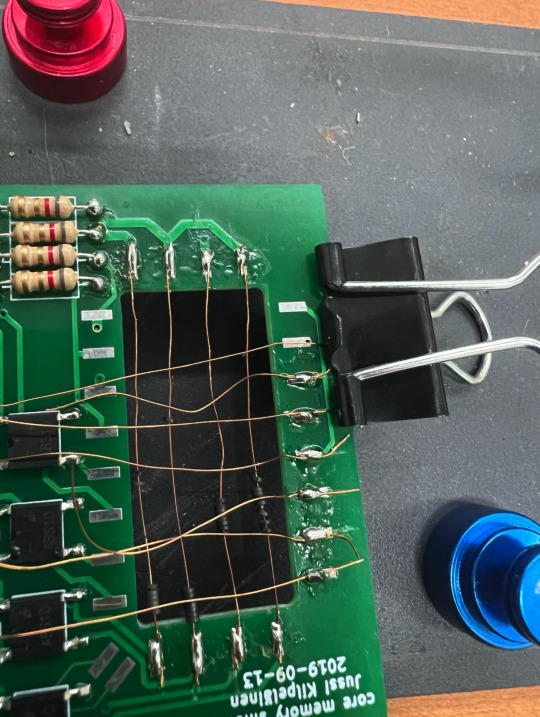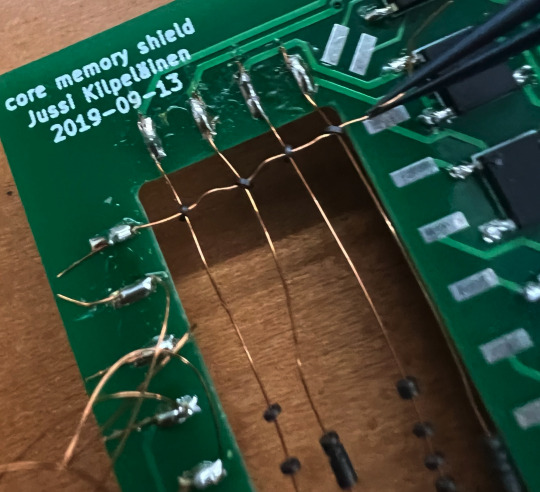#Computer Memory
Explore tagged Tumblr posts
Text
It's interesting to see how technology changes over time, including economically. One of the plot points in the 1984 novel Neuromancer involved 3MB of stolen RAM chips (this is the only thing about computers which William Gibson got right). Prior to the 1996 price crash, RAM was easily one of the most expensive parts of a computer. In 1984, a single 3MB RAM chip could have cost about USD$2600, adjusted for inflation as of 2025.
Earlier this afternoon, I placed an order on Newegg for 32GB of RAM, which is the better part of eleven thousand times that, for less than USD$60.
16 notes
·
View notes
Text
New transistor’s superlative properties could have broad electronics applications
New Post has been published on https://thedigitalinsider.com/new-transistors-superlative-properties-could-have-broad-electronics-applications/
New transistor’s superlative properties could have broad electronics applications


In 2021, a team led by MIT physicists reported creating a new ultrathin ferroelectric material, or one where positive and negative charges separate into different layers. At the time they noted the material’s potential for applications in computer memory and much more. Now the same core team and colleagues — including two from the lab next door — have built a transistor with that material and shown that its properties are so useful that it could change the world of electronics.
Although the team’s results are based on a single transistor in the lab, “in several aspects its properties already meet or exceed industry standards” for the ferroelectric transistors produced today, says Pablo Jarillo-Herrero, the Cecil and Ida Green Professor of Physics, who led the work with professor of physics Raymond Ashoori. Both are also affiliated with the Materials Research Laboratory.
“In my lab we primarily do fundamental physics. This is one of the first, and perhaps most dramatic, examples of how very basic science has led to something that could have a major impact on applications,” Jarillo-Herrero says.
Says Ashoori, “When I think of my whole career in physics, this is the work that I think 10 to 20 years from now could change the world.”
Among the new transistor’s superlative properties:
It can switch between positive and negative charges — essentially the ones and zeros of digital information — at very high speeds, on nanosecond time scales. (A nanosecond is a billionth of a second.)
It is extremely tough. After 100 billion switches it still worked with no signs of degradation.
The material behind the magic is only billionths of a meter thick, one of the thinnest of its kind in the world. That, in turn, could allow for much denser computer memory storage. It could also lead to much more energy-efficient transistors because the voltage required for switching scales with material thickness. (Ultrathin equals ultralow voltages.)
The work is reported in a recent issue of Science. The co-first authors of the paper are Kenji Yasuda, now an assistant professor at Cornell University, and Evan Zalys-Geller, now at Atom Computing. Additional authors are Xirui Wang, an MIT graduate student in physics; Daniel Bennett and Efthimios Kaxiras of Harvard University; Suraj S. Cheema, an assistant professor in MIT’s Department of Electrical Engineering and Computer Science and an affiliate of the Research Laboratory of Electronics; and Kenji Watanabe and Takashi Taniguchi of the National Institute for Materials Science in Japan.
What they did
In a ferroelectric material, positive and negative charges spontaneously head to different sides, or poles. Upon the application of an external electric field, those charges switch sides, reversing the polarization. Switching the polarization can be used to encode digital information, and that information will be nonvolatile, or stable over time. It won’t change unless an electric field is applied. For a ferroelectric to have broad application to electronics, all of this needs to happen at room temperature.
The new ferroelectric material reported in Science in 2021 is based on atomically thin sheets of boron nitride that are stacked parallel to each other, a configuration that doesn’t exist in nature. In bulk boron nitride, the individual layers of boron nitride are instead rotated by 180 degrees.
It turns out that when an electric field is applied to this parallel stacked configuration, one layer of the new boron nitride material slides over the other, slightly changing the positions of the boron and nitrogen atoms. For example, imagine that each of your hands is composed of only one layer of cells. The new phenomenon is akin to pressing your hands together then slightly shifting one above the other.
“So the miracle is that by sliding the two layers a few angstroms, you end up with radically different electronics,” says Ashoori. The diameter of an atom is about 1 angstrom.
Another miracle: “nothing wears out in the sliding,” Ashoori continues. That’s why the new transistor could be switched 100 billion times without degrading. Compare that to the memory in a flash drive made with conventional materials. “Each time you write and erase a flash memory, you get some degradation,” says Ashoori. “Over time, it wears out, which means that you have to use some very sophisticated methods for distributing where you’re reading and writing on the chip.” The new material could make those steps obsolete.
A collaborative effort
Yasuda, the co-first author of the current Science paper, applauds the collaborations involved in the work. Among them, “we [Jarillo-Herrero’s team] made the material and, together with Ray [Ashoori] and [co-first author] Evan [Zalys-Geller], we measured its characteristics in detail. That was very exciting.” Says Ashoori, “many of the techniques in my lab just naturally applied to work that was going on in the lab next door. It’s been a lot of fun.”
Ashoori notes that “there’s a lot of interesting physics behind this” that could be explored. For example, “if you think about the two layers sliding past each other, where does that sliding start?” In addition, says Yasuda, could the ferroelectricity be triggered with something other than electricity, like an optical pulse? And is there a fundamental limit to the amount of switches the material can make?
Challenges remain. For example, the current way of producing the new ferroelectrics is difficult and not conducive to mass manufacturing. “We made a single transistor as a demonstration. If people could grow these materials on the wafer scale, we could create many, many more,” says Yasuda. He notes that different groups are already working to that end.
Concludes Ashoori, “There are a few problems. But if you solve them, this material fits in so many ways into potential future electronics. It’s very exciting.”
This work was supported by the U.S. Army Research Office, the MIT/Microsystems Technology Laboratories Samsung Semiconductor Research Fund, the U.S. National Science Foundation, the Gordon and Betty Moore Foundation, the Ramon Areces Foundation, the Basic Energy Sciences program of the U.S. Department of Energy, the Japan Society for the Promotion of Science, and the Ministry of Education, Culture, Sports, Science and Technology (MEXT) of Japan.
#2-D#affiliate#applications#atom#atoms#author#billion#boron nitride#career#Cells#change#chip#collaborative#computer#computer memory#Computer Science#Computer science and technology#computing#education#electric field#Electrical Engineering&Computer Science (eecs)#electricity#Electronics#energy#engineering#flash#Foundation#Fundamental#Future#green
2 notes
·
View notes
Text
Making 32 bespoke hand crafted bits.

Hand made bits are so much nicer than store-bought bits.

In the early days of woven core memory they sent it off to women to weave because the dudes took one look at it and thought “this is girl stuff like sewing and weaving”
I find this hilarious.
Here is a link (cued to the time where it starts) of the best and most clear explanation of how core memory works. Reading & writing a bit has many steps!
I always felt there was something poetic about how one must destroy this kind of memory in order to read it. Observation is never passive... to observe a system is to change it...
#core memory#ferrite core#arduino#arduino shield#bits and bytes#computer memory#CS#computer history#women's history#weaving#textiles#textile arts#fiber crafts#soldering#electronics
17 notes
·
View notes
Text
I've never opted into the cloud and I will not use adobe ever.
We took a huge step back when storage was no longer on our own personal computer/ devices; But entrusted to a bunch of world wide serves that may or may not get hacked/ lost. I also refuse to have my passwords saved online in any form. What you put online is for all.
#adobe#adobe owns your art now#the cloud#cloud storage#passwords#computers#personal computers#computer memory#adobe photoshop
100K notes
·
View notes
Text
Nvidia RTX 50-Series: Unveiling the Next Generation of Graphics Power
In the ever-evolving world of gaming and high-performance computing, Nvidia consistently pushes the boundaries of graphical fidelity and processing power. As the current RTX 40-series, bolstered by a recent refresh, continues to enthral enthusiasts, Nvidia is already laying the groundwork for its successor: the much-anticipated RTX 50-series. While the official release date remains shrouded in…
0 notes
Text
https://www.futureelectronics.com/p/semiconductors--memory--RAM--static-ram--asynchronous/cy62167ev30ll-45zxi-infineon-9364399
Volatile memory, Computer memory, battery backed SRAM, ram memory
CY62167EV30 Series 16 Mb (1 M x 16/2 M x 8) 2.2 - 3.6 V 45 ns Static RAM-TSOP-48
#RAM#Static RAM#Asynchronous SRAM#CY62167EV30LL-45ZXI#Infineon#Volatile memory#Computer memory#battery backed SRAM#Random Access Memory#Static random access memory#Parallel SRAM memory#Nvram flash memory#what is Non Volatile SRAM
1 note
·
View note
Text
Computer memory
Computer memory is capable of storing any type of information for a long time. Humans can store huge amounts of data but may forget due to many factors, but a computer's memory remains forever until someone removes it.
All information in the computer is handled using electrical components such as integrated circuits and semiconductors, all of which can recognize only two states of an electrical signal, while I represents the presence of a signal.
Therefore, a bit is the smallest or most elementary bit of computer memory. A bit can store either a zero or a one. Since a single bit can store only four unique combinations,
Types of computer memory
1 Primary memory
2 Secondary memory
Primary memory
Primary memory is also called the main memory. It is use for immediate access of data by the processor (CPU)
it is the memory that is in the silicon chips and fixed on the electronic circuit board , called motherboard present inside the CPU cabinet
There are two type OF PRIMARY MEMORY
1. Random Access memory
2. Read only memory
Random Access memory
Random access memory is also known as volatile. It means the information stored in the memory is lost when you turn off the computer or the power goes off.
It is directly accessed by the CPU it is the fastest memory of the computer.
The most common RAM size that you can find on computer and laptops are 2GB, 4GB, 8GB, soon.
Read only memory
Read only memory is also known as non- volatile memory, it retains the stored information even when the power has been switched off. It hold the startup instructions that prepare a computer for use. It also consists of programs that check the power off computer parts when you turn it on
Secondary memory
Secondary memory is also known as auxiliary memory or external memory. It is used to store information permanently and for a longer period. Data is not lost in secondary memory even when the computer is turned off. Nowadays, many secondary storage devices are available that you can use as per your needs. Secondary storage devices refer to any non-volatile storage devices. They can be fixed internally or externally to the computer; they are also known as backup storage devices. They are used to store large amounts of data permanently. Hard discs, pen drives, CDs, DVDs, and Blu-ray discs.
0 notes
Text
0 notes
Text

FNAF Glamrock Freddy has an existential crisis..
#myart#chloesimagination#comic#fnaf#five nights at freddy's#glamrock freddy#fnaf gregory#security breach#fnaf fanart#a silly comic for today guys 🩵🩵#Poor Freddy though…#this is exactly why Glamrock Freddy doesn’t use the computer#he refuses to lie but also doesn’t know if he is robot#cause he has feelings and memories etc#THERE is a moment in security breach where Freddy sees other endos#and talks at length about what it means to be alive etc#so this is a sore area for Freddy#Gregory will help Freddy though as much as he can#it’s giving like kid helping their dad use the computer right BAHAH
8K notes
·
View notes
Text
Danny Is An Alternate Version Of Ra's Al Ghul And Flash Already Called Dibs On Adopting Him
Danny In All His Sleep Deprived Slightly Scuffed Up From A Fight Glory Is On His Way To Clockworks Tower To Hopefully Get A Nap And Maybe Some Homework Done When A Natural Portal Opens Up In Front Of Him And Proceeds To Unceremoniously Drop Him In The DC Verse Just Outside Of Central City Before Promptly Closing Leaving A Tired Danny Behind In A Run Down Abandoned Parking Lot.
It's Times Like This When Danny Regrets Putting Off Learning How To Make His Own Portals, Cause Now He Is Very Much Stuck For The Foreseeable Future And He Has No Idea Where Or When He Is. Luckily For Him However Central City Isn't Too Far Away, Unlucky For Him However Is That Once In The City He Realizes This Isn't His Dimension. He's Pretty Sure He'd Remember Something Called The Justice League.
So What Do You Do When Supernatural Bullshit Fails You? You Fall Back On Your Mad Scientist Roots And You Make A Portal Gun. So That's Exactly What Danny Plans To Do.
Unfortunately Staying Alive And Building Questionably Safe Portal Technology Requires Money And Supplies, So He Ends Up Wandering From City To City Doing Odd Jobs/Fixing Up Busted Tech For Cash Or Unwanted Electronics For His "Operation: Get Home" Needs. This Obviously Ends In A Few Superhero Encounter Shenanigans.
Though He Always Ends Up Back Near Central City, Both On The Off Chance The Natural Portal Will Open Up Again And Because Out Of All The Superheroes That Apparently Exist In This Universe The Speedsters Are His Favorite (Red Robin Is Solidly His Second Favorite Ever Since The Gotham Vigilante Gave Him A Large Coffee Filled With Enough Caffeine To Kill A Man).
Unbeknownst To Danny However Is That Every Hero/Vigilante He Has Encountered Has Come To At Least One Of The Following Conclusions; 1. Run Away Meta Who Is In Desperate Need Of A Good Meal/Adoption Bait. 2. Possibly Red Robin/Tim Drake Clone 3. A Good Kid But Could Possibly Be A Future Rouge If Left Unsupervised. 4. Did Bats Get A New Kid And Why Is He Here?
All Flash Knows Is That He Saw The Kid First And Therefore Has Dibs. Suck It Bruce.
Fast-forward A Few Months And Danny Gets Hurt During A Rogue Attack While Trying To Help Some Civilians Get To Safety (Old Hero Habits Die Hard (Ha Die Hard) And All That Jazz) And He Nopes Out Once Everyone Is Safe And When The Paramedics Are Busy With Other People Unaware He Left A Blood Sample Behind.
One DNA Test Brought To You By Paranoid Bat Concerns Of A Possible Red Robin Clone Later And They Find Out That Dannys DNA Matches One Ra's Al Ghul.
They Now Think Danny Is An Escaped Ra's Al Ghul Clone.
Memes For The Vibes:








#captain's posts#this has been haunting me#the flash/any of the speedsters:*exist*#danny:*can feel the speedforce on them* i like your vibe funny man#basically danny is actually an alternate version of Ra's Al Ghul and gets chucked into the dc vesrse#because natural portals are bitches hijinks ensue#and while i do love batfam adopting danny i think its very funny for flash to just yoink him while the big bad bat isn't looking#i desperately need him and tim to be besties tho specifically before they find out danny is an alternate Ra's Al Ghul#danny:*sitting in a park and tinkering with some circuitry* oh hey flash :)#flash: hey kid! great news i might be adopting a kid soon!#danny: oh really? thats cool-#flash:*holding out adoption papers and doing his best puppy eyes* its you. sign here.#danny:*vague memory of clockwork complaining about speedster pops into his mind* hmmm#danny:*deciding to be a little shit cause what else do you do when you're almost a year into being stuck in an alternate dimension* >=)#danny: sure why not? soooo full name or what?#flash:*didn't expect to get this far* uh-#i also really like danny being clockworks apprentice/time line clean upper so danny just remembers cw bitchin about the speedsters#also cause im a sucker for tim x danny...#tim:*having a crisis cause the cute meta kid he befriended/has a crush on may or may not be a vlone of Ra's Al Ghul* aaaaasaaaaaaaasaaaaaaa#dick: you okay buddy?#tim:*aggressively points at the dna match of danny to Ra's Al Ghul on the bat computer* AAAAAAAAAAAAAA#dick: Oh-#dc x dp#dp x dc#dp x dc crossover#dp x dc prompt#dpxdc
3K notes
·
View notes
Text
Propelling atomically layered magnets toward green computers
New Post has been published on https://thedigitalinsider.com/propelling-atomically-layered-magnets-toward-green-computers/
Propelling atomically layered magnets toward green computers
Globally, computation is booming at an unprecedented rate, fueled by the boons of artificial intelligence. With this, the staggering energy demand of the world’s computing infrastructure has become a major concern, and the development of computing devices that are far more energy-efficient is a leading challenge for the scientific community.
Use of magnetic materials to build computing devices like memories and processors has emerged as a promising avenue for creating “beyond-CMOS” computers, which would use far less energy compared to traditional computers. Magnetization switching in magnets can be used in computation the same way that a transistor switches from open or closed to represent the 0s and 1s of binary code.
While much of the research along this direction has focused on using bulk magnetic materials, a new class of magnetic materials — called two-dimensional van der Waals magnets — provides superior properties that can improve the scalability and energy efficiency of magnetic devices to make them commercially viable.
Although the benefits of shifting to 2D magnetic materials are evident, their practical induction into computers has been hindered by some fundamental challenges. Until recently, 2D magnetic materials could operate only at very low temperatures, much like superconductors. So bringing their operating temperatures above room temperature has remained a primary goal. Additionally, for use in computers, it is important that they can be controlled electrically, without the need for magnetic fields. Bridging this fundamental gap, where 2D magnetic materials can be electrically switched above room temperature without any magnetic fields, could potentially catapult the translation of 2D magnets into the next generation of “green” computers.
A team of MIT researchers has now achieved this critical milestone by designing a “van der Waals atomically layered heterostructure” device where a 2D van der Waals magnet, iron gallium telluride, is interfaced with another 2D material, tungsten ditelluride. In an open-access paper published March 15 in Science Advances, the team shows that the magnet can be toggled between the 0 and 1 states simply by applying pulses of electrical current across their two-layer device.
Play video
The Future of Spintronics: Manipulating Spins in Atomic Layers without External Magnetic Fields Video: Deblina Sarkar
“Our device enables robust magnetization switching without the need for an external magnetic field, opening up unprecedented opportunities for ultra-low power and environmentally sustainable computing technology for big data and AI,” says lead author Deblina Sarkar, the AT&T Career Development Assistant Professor at the MIT Media Lab and Center for Neurobiological Engineering, and head of the Nano-Cybernetic Biotrek research group. “Moreover, the atomically layered structure of our device provides unique capabilities including improved interface and possibilities of gate voltage tunability, as well as flexible and transparent spintronic technologies.”
Sarkar is joined on the paper by first author Shivam Kajale, a graduate student in Sarkar’s research group at the Media Lab; Thanh Nguyen, a graduate student in the Department of Nuclear Science and Engineering (NSE); Nguyen Tuan Hung, an MIT visiting scholar in NSE and an assistant professor at Tohoku University in Japan; and Mingda Li, associate professor of NSE.
Breaking the mirror symmetries
When electric current flows through heavy metals like platinum or tantalum, the electrons get segregated in the materials based on their spin component, a phenomenon called the spin Hall effect, says Kajale. The way this segregation happens depends on the material, and particularly its symmetries.
“The conversion of electric current to spin currents in heavy metals lies at the heart of controlling magnets electrically,” Kajale notes. “The microscopic structure of conventionally used materials, like platinum, have a kind of mirror symmetry, which restricts the spin currents only to in-plane spin polarization.”
Kajale explains that two mirror symmetries must be broken to produce an “out-of-plane” spin component that can be transferred to a magnetic layer to induce field-free switching. “Electrical current can ‘break’ the mirror symmetry along one plane in platinum, but its crystal structure prevents the mirror symmetry from being broken in a second plane.”
In their earlier experiments, the researchers used a small magnetic field to break the second mirror plane. To get rid of the need for a magnetic nudge, Kajale and Sarkar and colleagues looked instead for a material with a structure that could break the second mirror plane without outside help. This led them to another 2D material, tungsten ditelluride. The tungsten ditelluride that the researchers used has an orthorhombic crystal structure. The material itself has one broken mirror plane. Thus, by applying current along its low-symmetry axis (parallel to the broken mirror plane), the resulting spin current has an out-of-plane spin component that can directly induce switching in the ultra-thin magnet interfaced with the tungsten ditelluride.
“Because it’s also a 2D van der Waals material, it can also ensure that when we stack the two materials together, we get pristine interfaces and a good flow of electron spins between the materials,” says Kajale.
Becoming more energy-efficient
Computer memory and processors built from magnetic materials use less energy than traditional silicon-based devices. And the van der Waals magnets can offer higher energy efficiency and better scalability compared to bulk magnetic material, the researchers note.
The electrical current density used for switching the magnet translates to how much energy is dissipated during switching. A lower density means a much more energy-efficient material. “The new design has one of the lowest current densities in van der Waals magnetic materials,” Kajale says. “This new design has an order of magnitude lower in terms of the switching current required in bulk materials. This translates to something like two orders of magnitude improvement in energy efficiency.”
The research team is now looking at similar low-symmetry van der Waals materials to see if they can reduce current density even further. They are also hoping to collaborate with other researchers to find ways to manufacture the 2D magnetic switch devices at commercial scale.
This work was carried out, in part, using the facilities at MIT.nano. It was funded by the Media Lab, the U.S. National Science Foundation, and the U.S. Department of Energy.
#ai#amp#artificial#Artificial Intelligence#atomic#Big Data#binary#career#career development#challenge#code#collaborate#Community#computation#computer#computer memory#Computer science and technology#computers#computing#crystal#crystal structure#data#Design#development#devices#direction#efficiency#electron#Electronics#electrons
0 notes
Text
Difference between primary and secondary memory

0 notes
Text
Our Beautiful Minds
As I type this blog today, it occurred to me that I am very, very grateful for my computer. And, I might add — grateful that it is working well, AFTER having a technician help me with the problem of my computer restarting in the middle of the night which resulted in a loss of important data. Ugh! Our minds are like a computer. What we put in, is what comes out. On a daily basis we input data,…

View On WordPress
#blog#christian#church#computer#computer memory#computer technician#fences#guard your mind#high tech#Holy Spirit#inspiration#memory bank#minds#protect our minds#protect your mind#Proverbs 4:23#reboot#virus
0 notes
Text
NVIDIA GeForce RTX & NVIDIA GeForce GTX
NVIDIA GeForce RTX is a series of graphics processing units (GPUs) developed by NVIDIA, notable for its advanced technologies such as real-time ray tracing and AI-driven capabilities. Launched with the Turing architecture in the RTX 20 series and expanded with the Ampere architecture in the RTX 30 series, these GPUs are designed to offer top-tier performance for gaming, creative applications, and…

View On WordPress
0 notes